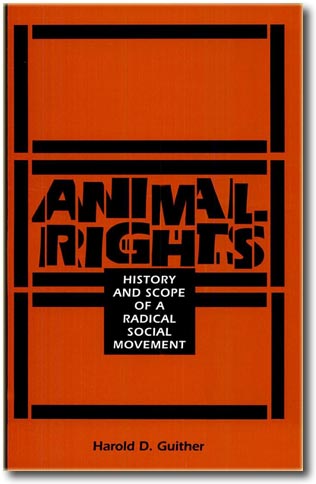The HumaneWatch Book Review: ‘Animal Rights: History and Scope’
 The animal rights movement is decades old in the United States. But most people know next to nothing about its origins and recent history. That’s certainly true about HSUS. (How many of us were adults in the 1950s?
The animal rights movement is decades old in the United States. But most people know next to nothing about its origins and recent history. That’s certainly true about HSUS. (How many of us were adults in the 1950s?
We’ve already brought to light certain key episodes from HSUS’s past. In the late 1980s, a massive financial scandal involving then-president John Hoyt and then-treasurer Paul Irwin created deep divisions in HSUS’s board. And early in HSUS’s history, it had a policy of sharing fundraising proceeds with hands-on pet shelters in many states. The shelters got the lion’s share—60 percent—of the money. Today their share of HSUS’s loot is typically about 1 percent.
If you’re looking for a good primer on HSUS and the other power-players in the animal rights movement, we recommend reading a volume called Animals Rights: History and Scope of a Radical Social Movement, by Dr. Harold D. Guither. (You can find limited excerpts in the Questia and Google Books archives.) At the time of his book’s publication, Guither was a Professor of Agricultural Economics at the University of Illinois.
While slightly dated (it was published in 1998), Guither’s book supplies facts that are hard to source elsewhere today. Here are some things about HSUS that we found useful:
- A deep divide existed in HSUS on the “animal rights” question during the ’80s and ’90s. Former HSUS president John Hoyt was neither a vegan nor a vegetarian (current president Wayne Pacelle is a vegan). But one staff member told a Washingtonian reporter in the mid-’80s that HSUS was “definitely shifting in the direction of animal rights faster than anyone would realize from our literature.”
- Noting HSUS’s public reputation in the late-’90s, Guither described people’s worries about the group’s “issue honesty.” He wrote: “Some see Hoyt as the politician working for support from the animal industry and livestock commodity groups while they see Michael Fox as the philosopher who takes positions that are not consistent with John Hoyt.” (Fox is famous for his assertion that “The life of an ant and that of my child should be granted equal consideration.”)
- In another recurring theme consistent with today’s HSUS, Guither noted that HSUS wasn’t opposed to “legitimate and appropriate” animal use. The catch, he added, “is who decides what is appropriate.”
- The late HSUS co-founder Helen Jones also founded the International Society for Animal Rights in 1957. That organization later kicked her out—and then sued her—for allegedly misusing more than $1 million in assets.
- HSUS was a principal financial backer of the late Henry Spira’s “Animal Rights International” group (ARI), which advocated transitioning the Western world to a vegetarian lifestyle. (According to “The HSUS X-Files,” Hoyt and Irwin both sat on ARI’s Board of Directors.)
- Current HSUS vice president Heidi Prescott got her start in the movement sabotaging hunts. She’s been arrested (at least) 6 times, and served 13 days in jail.
There’s more in the book itself. You can learn about the wacky origins of groups like PETA and the related (but woefully misnamed) “Physicians Committee” for Responsible Medicine, and how these various players interconnect. It’s also a good primer for anyone seeking knowledge about today’s animal rights movement, what it evolved from, and where the super-rich HSUS might yet take it in the future.



